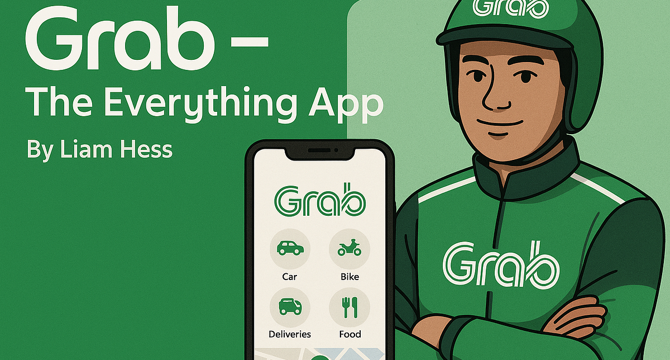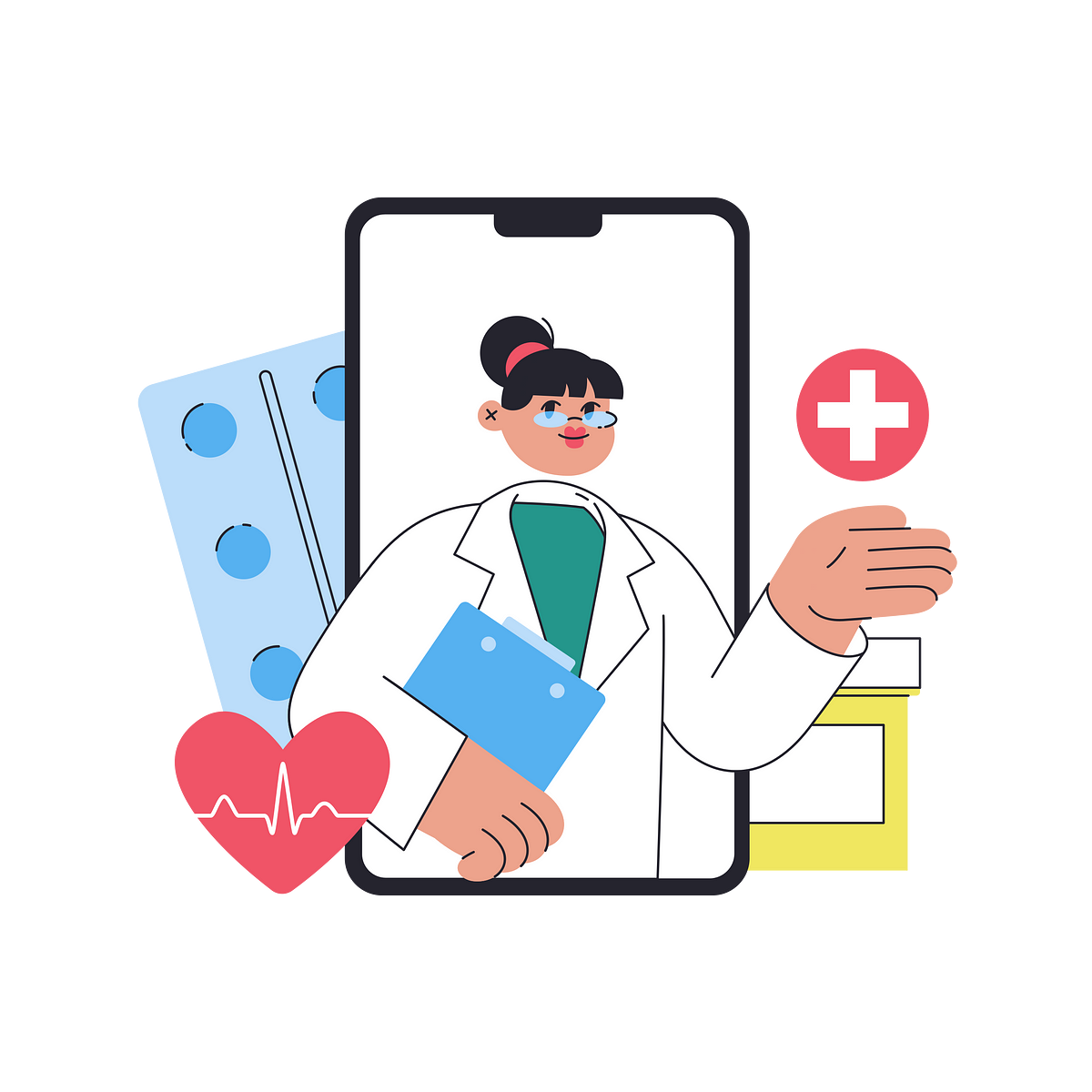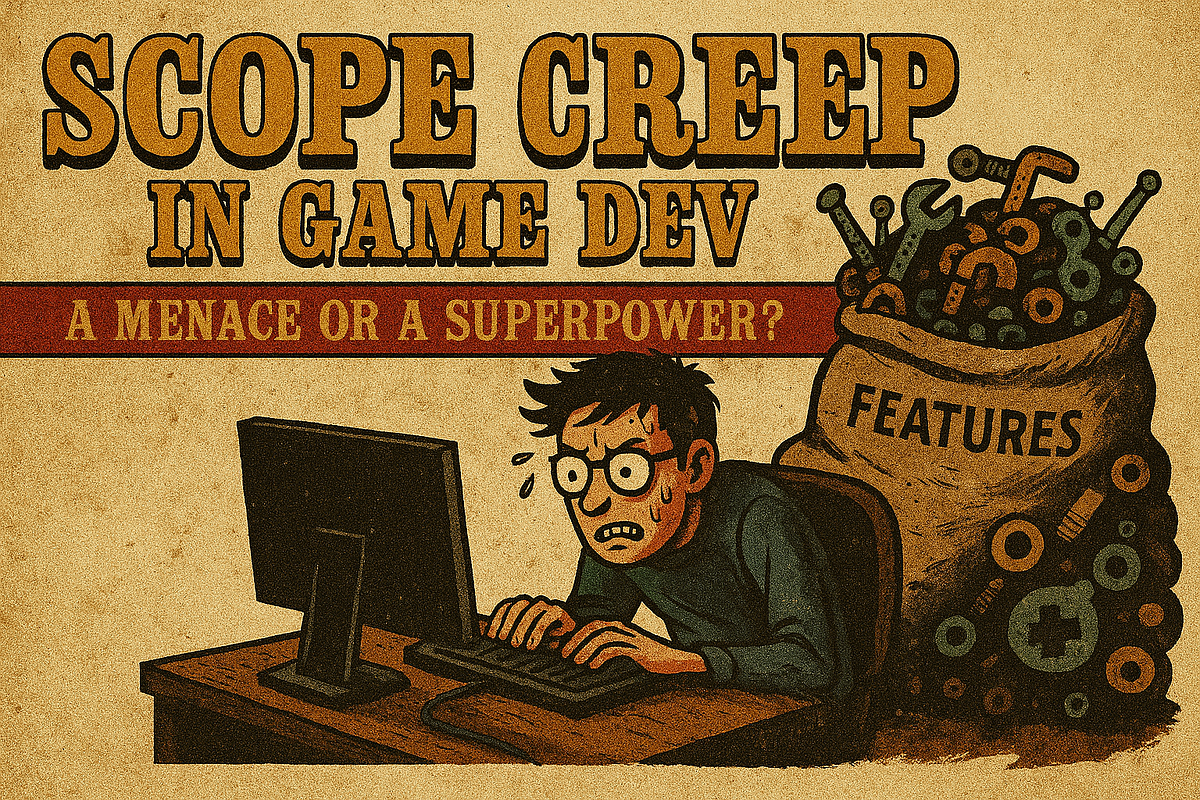Product Management News
Medium
263

I Almost Threw This Away — Then a Random Website Offered Me Cash for It
- A person discovered a website that offered cash for old phones after Googling what to do with them.
- The site had a simple interface where users could enter their phone model and instantly receive an offer.
- The individual received an offer of $143 for their old phone without having to list it or wait for buyers.
- The site actually paid for the phone, which surprised the individual who used it twice.
- The website is described as under the radar to avoid too many people flooding it and changing the offers.
- The individual hinted at not revealing the site's name for fear of altering the offers.
- Readers are encouraged to try the site themselves by using a specific link provided.
- The article suggests that old devices may be worth more than expected, urging readers not to overlook their old belongings.
Read Full Article
15 Likes
Medium
259

Image Credit: Medium
Grab — The Everything App
- Grab started as MyTeksi in Kuala Lumpur in 2012, focusing on taxi safety.
- Between 2013-2016, Grab expanded across Southeast Asia with services like car-hailing and GrabPay.
- In 2018, Grab acquired Uber's South-East Asian business, solidifying its position as #1 in mobility.
- 2020 saw Grab obtain Singapore's first digital-bank license, and in 2021 it listed on NASDAQ.
- Grab's growth was driven by understanding local needs, offering diverse services, and onboarding businesses during COVID-19.
- Grab's design principles focus on consistency, guided onboarding, simplicity, reusable components, and visibility.
- The app engages users with challenges, personalized feeds, localization, social features, and environmental initiatives.
- Grab monetizes through commissions, marketplace fees, GrabPay, advertising, delivery services, subscriptions, and partnerships.
- Grab's business model emphasizes sustainable profitability by focusing on customer lifetime value and revenue growth.
- Learning from Grab, product creators can implement simplicity, personalization, engagement strategies, and diverse revenue streams.
Read Full Article
15 Likes
Medium
285

Using Generative AI in Card and Payments Fraud Detection
- Financial institutions have traditionally used rule-based systems and traditional machine learning models for fraud detection, but these have limitations like data imbalance and lack of adaptability to new fraud patterns.
- Generative AI offers a more dynamic and adaptive approach to fraud detection by creating synthetic fraud data, excelling in anomaly detection, and automating feature engineering.
- Generative AI enables real-time adaptation to emerging fraud schemes, leading to improved accuracy, reduced false positives, faster detection of new fraud tactics, and better protection for consumers and financial institutions.
- Challenges include data privacy, quality of training data, potential misuse by fraudsters, regulatory compliance, and ensuring explainability of AI decisions.
- The integration of Generative AI in fraud detection systems enhances accuracy, reduces operational costs, and improves customer trust through a more seamless and secure transaction experience.
- Solutions like Featurespace TallierLTM showcase the benefits of GenAI in enhancing fraud detection rates and safeguarding consumers.
Read Full Article
17 Likes
Medium
241
Image Credit: Medium
What are the different billing models?
- Billing models are crucial for SaaS startups, shaping revenue flow and customer relationships.
- Different models offer specific advantages, aligning with business goals and customer needs.
- Choosing the right model is vital for startup success, enhancing customer satisfaction and revenue streams.
- Subscription pricing provides stable revenue streams and ongoing customer relationships.
- Freemium models attract users with free features and convert them to paying customers for premium services.
- Tiered pricing offers different service levels at varying prices, maximizing revenue and catering to diverse customers.
- Value-based pricing aligns product prices with customer perceptions of value, fostering customer-centric strategies.
- Dynamic pricing adjusts prices based on market conditions and customer behavior, optimizing revenue in fluctuating markets.
- Retainer agreements ensure steady revenue by offering ongoing services for upfront payments, fostering long-term relationships.
- Fixed Recurring Billing Model provides stability with consistent, predictable revenue streams.
- One-Time Charge Billing Model charges customers a single fee for full immediate access to a product or service.
- Hybrid billing models blend different strategies for flexible pricing options, catering to diverse customer needs.
- Effective implementation and alignment with business goals are critical for success across billing models.
- Each billing model brings distinct advantages and challenges for SaaS startups, requiring strategic selection and adaptation.
Read Full Article
14 Likes
Discover more
- Programming News
- Software News
- Web Design
- Devops News
- Open Source News
- Databases
- Cloud News
- Operating Systems News
- Agile Methodology News
- Computer Engineering
- Startup News
- Cryptocurrency News
- Technology News
- Blockchain News
- Data Science News
- AR News
- Apple News
- Cyber Security News
- Leadership News
- Gaming News
- Automobiles News
Medium
355

Image Credit: Medium
Designing with Purpose in Saturated Spaces like Healthcare
- Designing for saturated spaces like healthcare requires more than just clean aesthetics; it needs a purpose-driven approach and hierarchy.
- Purposeful design involves deciding what the user sees first, prioritizing actions, and ensuring clarity for efficient problem-solving in medical settings.
- Designing for clarity means creating affordances, using progressive disclosure, smart defaults, and context-responsive components.
- Good UX is often felt rather than visible, seen in seamless task completion and the absence of frustration.
- In saturated spaces, prioritizing user needs over interface desires and emphasizing structure and clarity can lead to a successful design.
- A well-designed experience in crowded environments doesn't shout but instead guides users.
Read Full Article
21 Likes
Medium
219

Image Credit: Medium
The Pulse of Progress: Advancing Global Healthcare
- Global healthcare inequality is a pressing global issue impacting economic development and public health.
- Efforts by organizations like the WHO and Global Fund aim to improve maternal health, combat diseases, and provide access to essential medicines.
- Technological innovation, such as AI diagnostics and telemedicine, is transforming healthcare delivery globally.
- COVID-19 highlighted the importance of strong health systems, emphasizing the need for planning, workforce training, and primary care investment.
- Universal Health Coverage (UHC) and integrated care models are crucial for improving health system resilience and patient outcomes.
- Public-private partnerships play a key role in innovation and resource mobilization for global health initiatives.
- Collaboration between sectors has led to significant advancements in combating diseases like malaria, tuberculosis, and HIV/AIDS.
- Promoting global health requires a collective commitment to equity, public health infrastructure, and preventive measures.
- Addressing challenges like climate change and antimicrobial resistance necessitates international cooperation and community engagement.
- Investing in innovation, equity, and systemic flexibility can lead to significant progress in global healthcare.
- Global health advancement is not just about technology but also about ensuring health as a fundamental human right.
- Substantial progress has been made to bridge gaps in healthcare systems worldwide through innovation and collaboration.
Read Full Article
13 Likes
Medium
145

Image Credit: Medium
Scope Creep in Game Dev: a menace or a superpower?
- The video discusses the issue of scope creep in game development, focusing on the long-delayed release of Beyond Good and Evil 2, which has been in development for over six years.
- The game's development has been stuck in what is described as 'development hell,' with the project continuously expanding beyond its original scope.
- Scope creep, the addition of features without proper planning, has led to the prolonged development cycle of the game.
- The expansion of the game's scope has caused delays, leading to a loss of interest from players who were initially excited about the game.
- Beyond Good and Evil 2 is not the only game affected by scope creep; other notable examples include Cyberpunk 2077 and Anthem.
- Scope creep is identified as a major issue in game development, often resulting in chaotic and unending development cycles.
- Developers may fall victim to scope creep by adding features based on last-minute decisions or trends without a clear plan.
- The practice of scope creep can negatively impact game development, causing delays, budget overruns, and loss of player interest.
- The discussion raises the question of whether scope creep can be considered a menace or a superpower in game development.
- While adding features can enhance gameplay, unchecked scope creep can lead to project failure and disappointment among players.
- Balancing innovation with controlled expansion is crucial for developers to avoid the pitfalls of scope creep.
- The article highlights the importance of proper planning and management to prevent scope creep and maintain focus during game development.
- It emphasizes the need for developers to prioritize essential features and avoid unnecessary additions that can derail the development process.
- Ultimately, the case of Beyond Good and Evil 2 serves as a cautionary tale about the dangers of scope creep in the gaming industry.
- The video encourages developers to approach game design with a strategic mindset to prevent scope creep and ensure timely releases.
- The prolonged development of Beyond Good and Evil 2 due to scope creep illustrates the challenges faced by developers in balancing ambition with realistic timelines.
- Overall, the discussion on scope creep prompts reflection on the impact of feature bloat on game development and the importance of disciplined project management.
Read Full Article
8 Likes
Medium
325

Image Credit: Medium
You will never be a killer PM in a Corporate Setting
- After excelling in analytics, Amy decided to transition to a product management role.
- However, she quickly realized that in many corporate settings, the role of a product manager is often limited to mundane tasks like creating playbooks and taking notes in meetings.
- Amy grappled with the shallowness of her role and sought ways to grow beyond the constraints of the corporate environment.
- The article suggests three paths for Amy's development as a true product manager: building something on her own, becoming an intrapreneur within the organization, and being a lifelong student through mentorship and hands-on learning.
- It emphasizes the importance of hands-on experience, data-driven decision-making, and the ability to balance hard and soft skills in product management.
Read Full Article
19 Likes
Medium
232

Image Credit: Medium
Product Management Lessons from Behavioural Science: Nudge
- Choice architects are individuals who organize the context in which people make decisions.
- Nudges are ways to alter behavior predictably without restricting options or changing economic incentives.
- Humans rely on rules of thumb to make decisions due to the need to make numerous decisions daily.
- Biases and blunders, like anchoring and availability bias, can lead people astray in decision-making.
- Humans have two systems of thinking: automatic (fast and intuitive) and reflective (slow and deliberate).
- Temptation and mindlessness contribute to inconsistencies in decision making.
- Nudges can be helpful in challenging decision situations where feedback is poor or choices offer delayed effects.
- Making actions or activities easy can encourage their uptake.
- Defaults and required choice can influence decision-making significantly.
- Systems should be forgiving and provide feedback to accommodate human errors.
- Good choice architecture helps individuals map choices to outcomes and select options beneficial to them.
- Smart disclosure and transparent information benefit decision-making and market fairness.
- Sludge refers to creating friction in choice architecture that hinders people from making decisions for their betterment.
- Competition does not always eliminate sludge; marketing tactics like 'Free Bank Accounts' can mislead consumers.
- Choice architects may strategically nudge individuals towards beneficial outcomes, like saving for retirement.
Read Full Article
14 Likes
Medium
316

Image Credit: Medium
5 things startups will do instead of testing with real users.
- Brand designers show mockups to buyers in pre-sales deck hero slides, translating nods as 'strong buy-in'.
- Weekly 'validation sessions' involve clicking through choreographed prototypes, collecting ad hoc feedback without challenges.
- Product managers spend days decoding feedback from Account Managers, only to reply vaguely about implementation.
- Startups invest in tools like Amplitude for data-driven design decisions, debating retention challenges without user insights.
- Despite efforts, design debt grows and user feedback remains unaddressed, leading to persistent issues.
Read Full Article
19 Likes
Medium
3

Image Credit: Medium
Why AI Is Gonna Kill Your Product (And How to Prevent It)
- AI, when misused, burdens a product instead of elevating it.
- For AI integration to be successful, it needs to be a deliberate, layered design approach.
- The 'Architecture of Intelligence' consists of four key stages: Data Capture, Feature Engineering, ML Models, Dashboard & Nudges.
- Design principles for AI use include observing before asking, continuous adaptation, building for explainability, and respecting human agency.
- Key questions to ask include whether data collection is meaningful, if models are learning from users, if insights are actionable, and if product design aligns with AI capabilities.
- AI integration should serve the same goal as the product and speak the same language across all its parts.
- AI doesn't fix a broken product but enhances a well-thought-out one.
Read Full Article
Like
Logrocket
241

Image Credit: Logrocket
Leader Spotlight: Leading product in a nonprofit organization, with Don Boulia
- Don Boulia, Chief Product and Technology Officer at Charity Navigator, discusses his transition from for-profit to nonprofit product management.
- Transition challenges include focusing on revenue over profit and aligning with the deeper missions of nonprofits.
- Charity Navigator measures success through revenue, impact reach, and influencing donations to rated nonprofits.
- Introducing a formal product management function involved defining roles, stakeholder mapping, and educating on product terminology.
- Implementing agile practices, roadmapping, OKRs, and KPIs helped Charity Navigator think and act more like a product organization.
- Indicators of the organization's shift include ROI assessment, capacity evaluation, mission alignment, and asking relevant product-focused questions.
- An example of successful product management adoption is the Causeway product that simplifies donating to causes by curating top nonprofits.
- Applying product management principles to Causeway marked a turning point in Charity Navigator's approach.
Read Full Article
14 Likes
Medium
118

Image Credit: Medium
Think You Know What Works? A/B Testing Will Humble You
- A/B testing, also known as split testing, involves comparing multiple versions of something to determine performance.
- Users are randomly split into groups, with one group seeing the original version (control) and the other the new version (variant).
- The test measures performance against specific goals like clicks, conversions, retention, or time-on-page.
- A/B testing replaces opinions with evidence, making it a powerful tool for decision-making.
- Despite its effectiveness, A/B testing has limitations and may not always provide perfect results.
- Several big companies have experienced surprising outcomes through A/B testing.
- The primary benefit of A/B testing lies in realizing how much is unknown until testing different versions.
- A/B testing serves as a humbling reminder of our limited knowledge until we experiment with different options.
- Confidence in design should be backed by testing to let users' preferences guide decisions.
- The process of A/B testing helps in continuous learning and improvement.
- The next time one feels certain about a design, message, or flow, testing it is advised to allow user feedback to reveal surprises.
Read Full Article
7 Likes
Medium
162

Launch, Learn, Repeat: A/B Testing the Right Way
- A/B testing is a method to compare variations of a feature or flow based on real user behavior.
- Good A/B testing is hypothesis-driven, involves careful user segmentation, tracking relevant metrics, and waiting for statistically significant results.
- It is essential for product teams to move fast and validate messaging, and for engineers to optimize experiences without disruptions.
- Mercari's listing growth team ran an A/B test to raise awareness about zero-fee listings, testing stronger, benefit-driven messaging on the homepage CTA.
- The experiment was launched using LaunchDarkly, segmented by region and platform, and tracked three main metrics.
- Even subtle UI changes and personalized CTAs led to higher engagement.
- Successful companies make experimentation a core part of their product culture.
- An effective A/B test is essential to ask relevant questions and involves various team members, including designers, engineers, marketers, and technical writers.
- Experimentation helps teams unite by turning assumptions into data.
- The best experiments bring together product, design, engineering, and marketing teams.
- A/B tests should be seen as the start of a conversation with users, not a final answer.
- The author plans to share more insights on product experimentation, technical storytelling, and frontend development in upcoming blog posts.
- A/B testing is a continuing learning process for software engineers and product thinkers.
- A/B testing is crucial for learning from users in real time and improving product experiences.
- The author, Kruthi Hegde, is a software engineer and product thinker.
- Overall, A/B testing is about constant learning, experimentation, and improvement in product development.
Read Full Article
9 Likes
Medium
79
Image Credit: Medium
AI/ML or Regular Code: How to Call a Bluff?
- Machine learning is a set of methods and tools that help achieve the goal of artificial intelligence.
- In machine learning, the model learns the relationship between input and output during training, unlike traditional programming where logic is explicitly coded by humans.
- Key questions to distinguish AI/ML from regular programming include the type of model used, whether the system learns and improves over time, and if labeled data is utilized for evaluation.
- Some vendors falsely claim AI/ML capabilities when it is just regular programming, leading to credibility issues.
Read Full Article
4 Likes
For uninterrupted reading, download the app